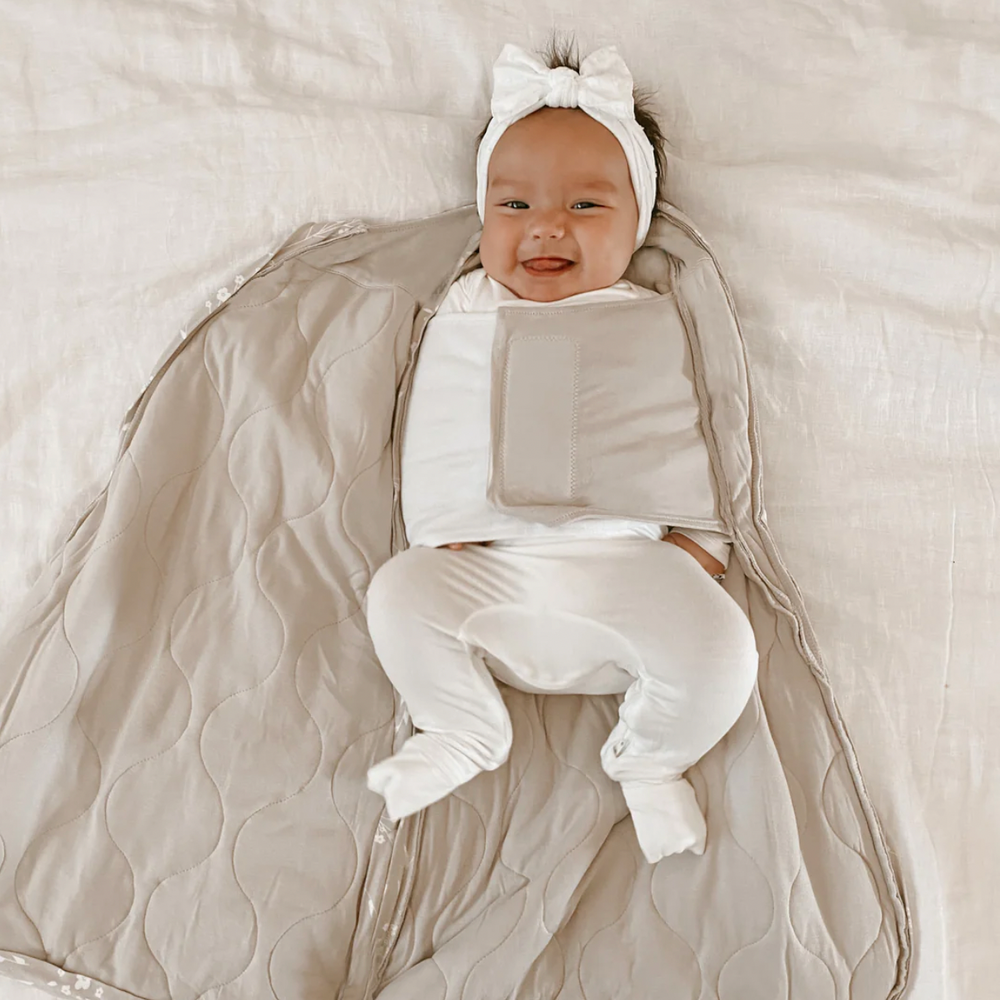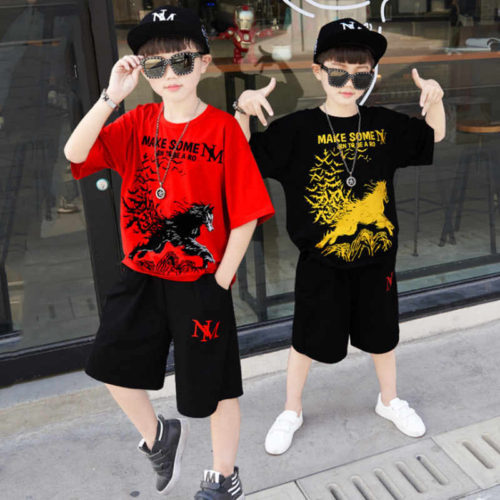Babies typically wear a onesie or a lightweight sleeper under a swaddle. This ensures comfort and warmth without overheating.
Swaddling helps newborns feel secure, mimicking the womb’s environment. Choosing the right clothing under the swaddle is essential for your baby’s comfort. A snug-fitting onesie or a soft sleeper allows freedom of movement while providing warmth. Avoid bulky clothing, as it can cause overheating.
Monitor the room temperature and adjust the layers accordingly. Babies often have varying needs based on their age and developmental stage. Understanding these needs will help you create a cozy and safe sleeping environment. Keep in mind that every baby is unique, so pay attention to your child’s cues for the best results.
Table of Contents

Credit: community.whattoexpect.com
Introduction To Swaddling
Swaddling is a technique used to wrap babies snugly. It mimics the feeling of being in the womb. This can soothe newborns and promote better sleep. Many parents wonder what babies should wear under a swaddle.
Benefits Of Swaddling
Swaddling provides many advantages for infants:
- Improved Sleep: Swaddling helps babies sleep longer.
- Reduced Startle Reflex: It keeps babies calm and secure.
- Warmth: Swaddling keeps babies warm without extra blankets.
- Comfort: It mimics the snug feeling of the womb.
Safety Considerations
Ensure safe swaddling practices to protect your baby:
- Choose the Right Material: Use breathable fabrics.
- Check for Tightness: Swaddle snugly, but not too tight.
- Monitor Baby’s Temperature: Avoid overheating.
- Stop Swaddling: Transition out of swaddling by 2-3 months.
Follow these guidelines for safe swaddling. Proper swaddling can enhance your baby’s comfort and sleep.

Credit: community.whattoexpect.com
The Basics Of Baby Swaddling
Swaddling is a common practice for newborns. It helps babies feel secure. A good swaddle mimics the womb. This can calm a fussy baby. But what should babies wear under a swaddle?
Proper Swaddling Technique
Swaddling properly is key for safety and comfort. Follow these steps:
- Choose a soft, breathable blanket.
- Lay the blanket in a diamond shape.
- Fold down the top corner.
- Place the baby on their back, head above the fold.
- Wrap the left side over the baby.
- Secure the right side snugly.
- Leave enough room for the legs to move.
Check that the swaddle is not too tight. A loose swaddle allows for leg movement. This is important for hip development.
When To Swaddle Your Baby
Swaddling works best in certain situations:
- During naps and nighttime sleep.
- When the baby is fussy or crying.
- In cooler temperatures, to keep the baby warm.
Do not swaddle your baby all day. Babies need time to stretch and move. Stop swaddling when the baby shows signs of rolling over.
| Signs to Stop Swaddling |
|---|
| Baby can roll over |
| Baby shows discomfort |
| Baby prefers arms free |
Understanding these basics helps create a safe sleep environment. Choose the right clothing under the swaddle for comfort.
Understanding Baby’s Comfort
Keeping babies comfortable is essential for their well-being. The right clothing under a swaddle helps regulate their temperature. It also allows them to move freely. Parents must pay attention to their baby’s needs.
Reading Baby’s Cues
Babies communicate their comfort through various cues. Observing these signals helps you understand their needs.
- Fussing or Crying: Indicates discomfort or too much warmth.
- Yawning: Suggests tiredness, signaling the need for sleep.
- Clenching Fists: May indicate feeling cold or insecure.
Watch for these signs. Adjust clothing layers based on their reactions. It’s crucial to respond quickly to ensure comfort.
Temperature Regulation For Infants
Infants are not great at regulating their body temperature. Dress them in suitable layers to keep them comfortable.
| Temperature | Recommended Clothing |
|---|---|
| Below 68°F (20°C) | Long-sleeve onesie and lightweight swaddle |
| 68°F – 72°F (20°C – 22°C) | Short-sleeve onesie and breathable swaddle |
| Above 72°F (22°C) | Short-sleeve onesie or diaper only |
Use breathable fabrics like cotton. This helps maintain a comfortable temperature. Avoid overdressing your baby. Too many layers can lead to overheating.
Check your baby’s neck or back for signs of sweating. Adjust clothing as needed to ensure comfort.

Credit: gunamuna.com
Layering Under The Swaddle
Choosing the right clothing under a swaddle is essential. Proper layering keeps your baby comfortable and safe. The goal is to maintain an ideal temperature while ensuring your little one feels secure.
Selecting The Right Materials
Use soft, breathable fabrics for your baby’s comfort. Here are some suitable materials:
- Cotton: Lightweight and highly breathable.
- Bamboo: Naturally moisture-wicking and soft.
- Muslin: Offers breathability and a snug fit.
Avoid materials like polyester. They trap heat and can cause discomfort.
Avoiding Overheating
Overheating can be dangerous for babies. Follow these tips to keep your little one cool:
- Check the room temperature. Aim for 68-72°F (20-22°C).
- Dress your baby in one layer. Use a lightweight onesie.
- Monitor your baby’s temperature. Feel their neck or back.
- Use a breathable swaddle. Look for cotton or muslin options.
Remember, a cool baby sleeps better and safer. Avoid heavy blankets or multiple layers.
Clothing Choices For Babies
Choosing the right clothing for babies under a swaddle is important. Comfort and warmth are key. Parents want to ensure their little ones feel snug and secure. Here are some popular clothing options.
Onesies And Bodysuits
Onesies and bodysuits are ideal choices for swaddled babies. They are snug and keep the baby’s tummy covered. Here are some benefits:
- Easy to put on: They have snaps or zippers.
- Flexible fit: Stretchy fabric allows movement.
- Warmth: Provides extra layers under the swaddle.
Look for ones made from soft, breathable materials. Cotton is a great choice. It keeps babies comfortable throughout the night.
Footed Pajamas Vs. Socks
When deciding between footed pajamas and socks, consider the following:
| Option | Benefits | Drawbacks |
|---|---|---|
| Footed Pajamas |
|
|
| Socks |
|
|
Consider the room temperature and baby’s comfort. Footed pajamas offer more warmth. Socks may be suitable for warmer nights.
Appropriate Fabrics For Baby Wear
Choosing the right fabric for baby wear is crucial. Comfort and safety are top priorities. Fabrics should allow breathability and warmth. Here are some ideal options for dressing your baby under a swaddle.
Breathable Cotton
Cotton is a popular choice for baby wear. It’s soft, gentle, and hypoallergenic. This fabric allows air to circulate, keeping babies cool. Cotton also absorbs moisture well, helping to prevent overheating.
- Soft and gentle on baby’s skin
- Good moisture absorption
- Available in various patterns
- Easy to wash and maintain
Weather-appropriate Synthetic Blends
Synthetic blends can be great for specific climates. They often combine the benefits of cotton and other materials. Look for blends that include polyester or rayon. These fabrics are durable and can wick away moisture.
| Fabric Type | Benefits | Best For |
|---|---|---|
| Polyester Blend | Durable, moisture-wicking | Warm weather |
| Rayon Blend | Soft, breathable | Cool weather |
Always check labels for care instructions. This ensures longevity and safety. Keeping your baby comfortable is essential.
Swaddling In Different Climates
Swaddling keeps babies snug and secure. However, the climate plays a big role in what they wear underneath. Dressing your baby right under a swaddle ensures comfort and safety. Here’s how to dress your baby based on the weather.
Dressing For Warm Weather
In hot climates, keeping your baby cool is essential. Use lightweight and breathable fabrics. Here are some tips:
- Choose cotton or bamboo materials.
- Dress your baby in a short-sleeve onesie.
- Skip the socks to avoid overheating.
- Use a lightweight swaddle that allows airflow.
Ensure the room temperature stays between 68°F and 72°F. A fan or air conditioning can help maintain comfort.
Dressing For Cold Weather
Cold climates require extra layers for your baby. Keeping your little one warm is important. Here are suggestions:
- Use a long-sleeve onesie or sleep sack.
- Add a thin layer of cotton underneath.
- Consider using socks or booties for warmth.
- Choose a thicker swaddle or one with fleece lining.
Monitor the room temperature. Aim for 68°F to 72°F. Adjust layers as needed. Always check if your baby feels too hot or cold.
Navigating Nighttime Swaddling
Swaddling helps babies feel secure and cozy. Choosing the right sleepwear under the swaddle is important. It keeps your baby comfortable through the night. Let’s explore the best options for nighttime swaddling.
Sleepwear Under Swaddle
Choosing the right sleepwear for your baby is crucial. The right fabric and fit matter for comfort. Here are some recommended options:
- Lightweight Cotton Pajamas: Soft and breathable, perfect for warmer nights.
- Long-sleeve Onesies: Great for cooler temperatures, they keep baby warm.
- Sleep Sacks: Offer extra warmth and allow for movement.
- Thermal Sleepwear: Ideal for chilly nights, keep baby snug.
Always ensure the fabric is gentle on the skin. Avoid any clothing with loose strings or small parts. These can pose safety risks during sleep.
Adjusting For Sleep Patterns
Your baby’s sleep patterns can change frequently. Adjusting sleepwear helps keep them comfortable. Here’s how to adapt:
- Monitor Room Temperature: Keep the nursery between 68°F to 72°F.
- Check Baby’s Warmth: Feel their neck or back for temperature.
- Layer Wisely: Use layers to easily adjust warmth.
- Swap Fabrics: Use lighter fabrics in summer and warmer in winter.
Regularly review your baby’s comfort level. A cozy baby sleeps well, which means better rest for everyone.
Diapering Considerations
Choosing the right diaper for swaddled babies is crucial. A good diaper helps keep babies comfortable. It also prevents leaks during sleep. Here, we’ll explore the best options for diapering.
Choosing The Right Diaper
Selecting a diaper for a swaddled baby involves several factors:
- Size: Diapers should fit snugly but not too tight.
- Absorbency: Choose diapers that can hold moisture well.
- Material: Soft, breathable materials keep the baby comfy.
- Type: Consider disposable or cloth options based on your needs.
Here’s a quick table comparing the two types:
| Type | Pros | Cons |
|---|---|---|
| Disposable |
|
|
| Cloth |
|
|
Changing Diapers Without Unswaddling
Changing a diaper while keeping a baby swaddled is possible. Follow these simple steps:
- Gently lift the swaddle from the bottom.
- Unfasten the diaper tabs carefully.
- Slide the dirty diaper out.
- Replace it with a clean diaper.
- Fasten the diaper tabs securely.
This method keeps your baby cozy while ensuring cleanliness. It saves time and reduces disturbance during sleep.
Swaddle Transitioning Clothes
Swaddle transitioning clothes help babies adjust after swaddling. These clothes provide comfort and security. They allow for safe movement while keeping your baby cozy.
Sleep Sacks
Sleep sacks are great for transitioning from swaddles. They keep your baby warm without restricting movement. Here are some key features:
- Allows for free arm movement
- Available in various fabrics
- Easy to put on and take off
Sleep sacks come in different sizes. Choose one that fits your baby snugly. This helps prevent slipping. Many parents find them ideal for nighttime sleep.
| Size | Age Range | Weight Limit |
|---|---|---|
| Small | 0-3 months | Up to 14 lbs |
| Medium | 3-6 months | 14-18 lbs |
| Large | 6-12 months | 18-24 lbs |
Transition Swaddles
Transition swaddles help babies move from full swaddling. They allow some freedom while still providing security. Here are the benefits:
- Two-in-one design for easy change
- Zipper or Velcro options for convenience
- Breathable fabric for comfort
These swaddles often have removable sleeves. This feature helps your baby adjust gradually. Parents love them for their flexibility and ease of use.
Choose a transition swaddle based on your baby’s needs. Look for features that suit your lifestyle. This ensures both comfort and safety during sleep.
Special Swaddling Circumstances
Swaddling is comforting for many babies. Yet, some babies have unique needs. Choosing the right clothing under a swaddle is essential. Let’s explore special swaddling circumstances.
Preemies And Newborns
Preemies and newborns require special attention. Their skin is delicate. Here are some tips for dressing them:
- Use soft fabrics. Cotton or bamboo are great choices.
- Dress in layers. This helps with temperature control.
- Skip bulky clothing. It can restrict movement.
Consider the following table for clothing options:
| Clothing Type | Best for |
|---|---|
| Bodysuits | Preemies and newborns |
| Sleep sacks | All babies |
| Footed pajamas | Newborns |
Always check the room temperature. Dress your baby accordingly. Too warm can lead to overheating.
Babies With Hip Dysplasia
Hip dysplasia needs careful consideration. Swaddling can affect hip development. Use these tips for dressing:
- Choose a loose swaddle. This allows hip movement.
- Use hip-healthy wraps. Special wraps support hip positioning.
- Avoid tight fabrics. They can restrict hip growth.
Consider these clothing options:
| Clothing Type | Recommendation |
|---|---|
| Adjustable swaddle wraps | Recommended |
| Regular swaddles | Avoid |
| Leggings | Optional |
Always consult with your pediatrician. They can provide guidance on the best practices.
Washing And Care For Baby Clothes
Keeping baby clothes clean is essential for your little one’s health. Proper washing and care ensure comfort and safety. Here are some important tips to follow.
Laundry Tips
- Use a gentle detergent made for babies.
- Wash clothes separately from adult items.
- Use cold or warm water, never hot.
- Choose a gentle cycle on your washing machine.
- Air dry or use a low heat setting in the dryer.
Follow these steps for best results:
- Check labels for washing instructions.
- Remove stains quickly to prevent setting.
- Sort items by color and fabric type.
Avoiding Irritants
Baby skin is sensitive. Avoid potential irritants in their clothes.
| Item | Potential Irritant |
|---|---|
| Fabric Softener | Can cause skin reactions. |
| Fragranced Detergents | May irritate delicate skin. |
| Harsh Chemicals | Can lead to rashes and discomfort. |
Choose safe products for washing baby clothes. Look for hypoallergenic and fragrance-free options. Always rinse clothes thoroughly to remove any detergent residue.
Swaddling And Development
Swaddling helps babies feel secure. It mimics the womb environment. This comfort can support their development. Yet, it’s vital to consider what babies wear under the swaddle.
Encouraging Motor Skills
Swaddling affects a baby’s motor skills. Proper swaddling allows for growth and movement.
- Swaddling keeps the arms close to the body.
- It prevents startling reflexes.
- Babies can focus on developing strength.
Choose lightweight fabrics for swaddles. Breathable materials promote comfort. Babies should have enough room to move their legs. This movement is crucial for hip development.
When To Stop Swaddling
Most experts suggest stopping swaddling around 2 to 4 months. Signs include:
- Baby starts rolling over.
- Baby resists being swaddled.
- Baby shows signs of discomfort.
Stopping swaddling encourages independence. Babies learn to self-soothe without the swaddle. This transition supports their growth.
Final Thoughts On Baby Swaddling
Swaddling is a comforting technique for newborns. It helps them feel secure and cozy. Choosing the right clothing under a swaddle is important for comfort and safety.
Balancing Comfort And Safety
Finding the right balance is key. Babies need warmth, but they also need to breathe. Here are some tips:
- Lightweight Fabrics: Use breathable materials like cotton.
- Layering: Choose one or two layers depending on the temperature.
- Monitor Temperature: Check if your baby feels too warm or cold.
Consider these clothing options under a swaddle:
| Clothing Type | Recommended Use |
|---|---|
| Onesies | Ideal for warmer weather. |
| Sleep Sacks | Great for extra warmth. |
| Light Pajamas | Best for cooler nights. |
Listening To Your Baby’s Needs
Every baby is different. Pay attention to your baby’s cues. They may show signs of discomfort or overheating. Here are some signs to watch for:
- Fussiness or crying.
- Excessive sweating.
- Cold hands or feet.
Adjust their clothing accordingly. Always prioritize your baby’s comfort. Swaddling should be a soothing experience.
Frequently Asked Questions
What Should Babies Wear Under A Swaddle?
Babies typically wear a diaper and a lightweight onesie under a swaddle for comfort and warmth.
Can Babies Wear Pajamas Under A Swaddle?
Yes, lightweight pajamas can be worn under a swaddle, ensuring they don’t overheat during sleep.
Is It Safe To Swaddle A Baby In Summer?
Swaddling in summer is safe if using breathable fabrics and dressing the baby in light clothing to prevent overheating.
How Tight Should A Swaddle Be?
A swaddle should be snug around the torso but allow for hip movement to promote healthy development.
Should I Use A Blanket Under A Swaddle?
Using a blanket under a swaddle isn’t necessary; opt for lightweight, breathable swaddle wraps instead for safety. “`
Conclusion
Choosing the right clothing for your baby under a swaddle is essential for comfort and safety. Opt for lightweight, breathable fabrics to ensure your little one stays cozy without overheating. Always prioritize their comfort and adjust layers as needed. With the right attire, your baby will enjoy peaceful, restful sleep.







